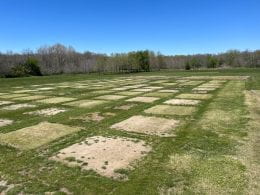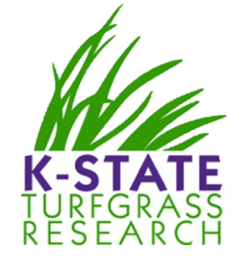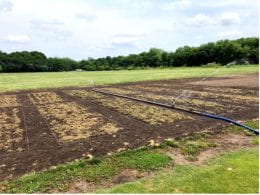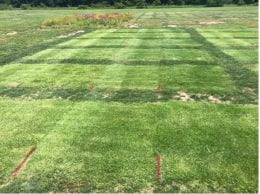By Jack Fry, Professor and Commercial Turf Extension Specialist
The National Turfgrass Evaluation program is a cooperative effort between the non-profit National Turfgrass Evaluation Program, Inc., and the United States Department of Agriculture (USDA). NTEP is headquartered at the Beltsville Agricultural Research Center in Beltsville, Maryland. NTEP started in 1980 with J.J. Murray. For many years, Kevin Morris has been overseeing NTEP.

NTEP trials are underway at three locations in Kansas. At Olathe, trials are being done on fine fescue (planted in 2020), tall fescue (planted in 2020), and zoysiagrass (planted in 2019). The fine fescue and tall fescue trials are low maintenance trials in Kansas, but not at all locations, which are mowed at 2.5 inches, receive no supplemental irrigation, and are fertilized with only 1 lb of nitrogen per 1,000 sq. ft. applied annually in autumn.
The zoysiagrass NTEP trial in Olathe is mowed at 0.75 inches 2 to 3 times weekly and receives 1 to 1.5 of nitrogen per 1,000 sq. ft. applied annually in early summer.
At the John C. Pair Center, the NTEP bermudagrass trial (planted in 2019) is being done and you’ll also find a specific article in the 2023 Turfgrass Research Report regarding their performance: https://newprairiepress.org/kaesrr/vol9/iss5.

In Overland Park, the NTEP creeping bentgrass putting green trial (planted in 2020) is being conducted at Milburn Country Club and maintained as they do other putting greens at the course. Steve Wilson, golf course superintendent at Milburn CC, has been very courteous to allow use of their nursery green area for this trial to be conducted and he oversees management of the site.
You can view data Kansas and multiple other locations from 2021, 2022 and many other years for trials conducted. The NTEP website allows access to data and results from all NTEP trials. Find information here: www.ntep.org







